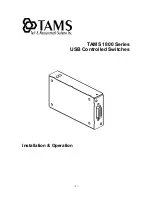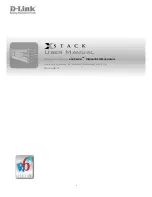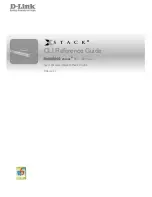
Dimension ES-1016A/ES-1024A User’s Guide
1-2
Getting to Know Your Switch
•
IEEE 802.1p supports two priority queues for outgoing traffic.
•
Back-Pressure-Base flow control on Half-duplex ports.
•
Pause-Frame-Base flow control on Full-duplex ports.
•
Store-and-forwarding switching architecture for abnormal packet filtering.
•
Supports automatic address learning.
•
No-Blocking full wire speed architecture.
•
Fan free design.
•
Embedded 4K MAC address table providing 4000 MAC addresses entries.
•
Power, LNK/ACT and FDX/COL LEDs.
•
Standard 19-inch rack-mount design.
1.2.1 IEEE 802.1p Class of Service
The IEEE 802.1p Class of Service (CoS) provides two queues for high and low priority traffic. This improves
network efficiency and performance by giving higher priority to outgoing traffic. For example, the lower
queue has a priority value in the range of zero to three and the higher queue has a priority value in the range
four to seven.
1.3
Package Contents
Compare the contents of your ES package with the checklist below. If any item is missing or damaged, please
contact your local dealer.
•
ES-1016A/ES-1024A Ethernet switch
•
Power cord
•
Quickstart Guide
•
This User’s Guide in CD-ROM format.
•
Four rubber feet
•
Rack mount brackets
1.4
Ethernet Switching Technology
Ethernet Switching Technology has dramatically boosted the total bandwidth of a network, eliminated
congestion problems inherent with CSMA/CD (Carrier Sense multiple access with Collision Detection)
protocol, and greatly reduced unnecessary transmissions.
This revolutionized networking in a number of ways:
By allowing two-way, simultaneous transmissions over the same port (Full-duplex), which essentially doubled
the bandwidth.
Reducing the collision domain to a single switch-port, which eliminated the need for carrier sensing.
Using the store-and-forward technology’s approach of inspecting each packet to intercept corrupt or redundant
data, switching eliminated unnecessary transmission that slowed the network.
By employing address learning, which replaced the inefficient receiving port.












































